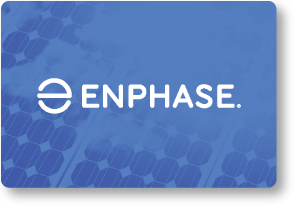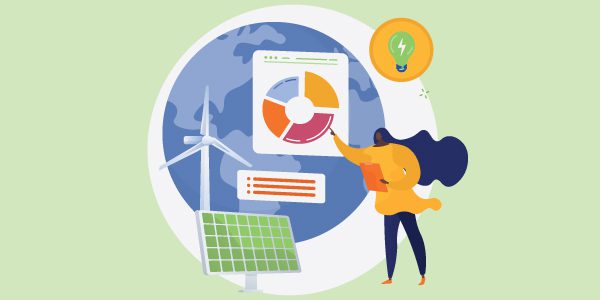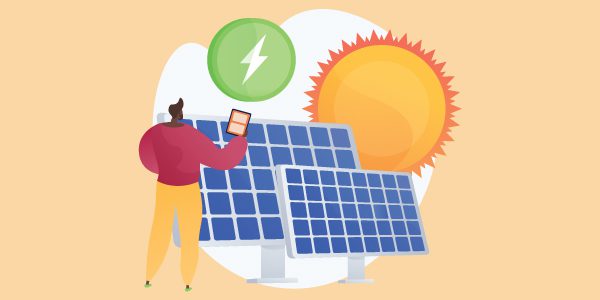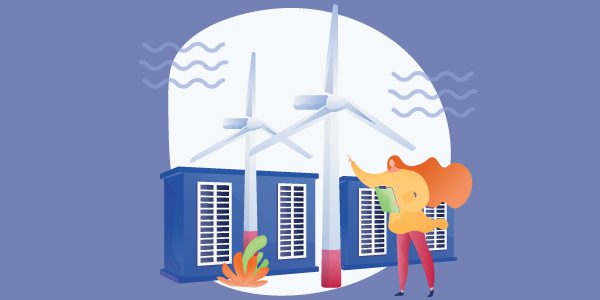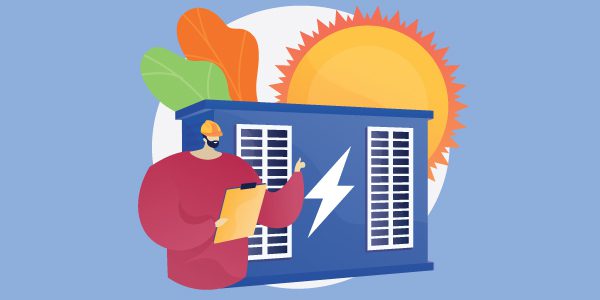In a world where the need for energy transition and decarbonisation is paramount, the energy landscape is undergoing a profound transformation.
The traditional model of energy consumption, characterised by a one-way flow of power from utility companies to consumers, is evolving into a dynamic, collaborative approach known as “Energy as a Service” (EaaS).
This shift is driven by the imperative to harness renewable energy sources, decentralised energy production, and sustainable practices, creating new opportunities to disrupt the conventional energy market.
What exactly is Energy as a Service?
At its core, EaaS represents a paradigm shift from viewing energy as a mere commodity to treating it as a comprehensive service. This innovative approach introduces flexibility, choice, and collaboration into the energy ecosystem. It empowers businesses and individuals to actively manage their energy consumption, reduce costs, and participate in a sustainable and environmentally responsible energy future.
The adoption of EaaS comes with a multitude of benefits, reshaping how we interact with and consume energy. With real-time monitoring and optimisation capabilities, EaaS allows for more efficient energy usage and risk management, leading to significant cost savings for consumers and businesses, as well as reduced uncertainties associated with energy price fluctuations, equipment failures, and supply disruptions.
It also promotes financial sustainability while reducing the carbon footprint of energy consumption. Furthermore, EaaS platforms offer transparency into energy consumption patterns and costs, empowering users to make informed decisions on their energy assets with the potential to unlock new revenue streams.
The concept of Energy as a Service is versatile, with various applications across residential, commercial, industrial, and community settings. Some of the commonly known forms of EaaS include:
- Residential Solar Leasing: homeowners can lease solar panels from service providers, benefiting from reduced energy bills and a smaller carbon footprint while the provider handles installation and maintenance.
- Industrial Energy Efficiency Contracts: large manufacturing facilities can engage with Energy Service Companies (ESCOs) to optimise energy usage and guarantee energy savings, compensating the ESCO based on actual savings achieved.
- Electric Vehicle (EV) Charging as a Service: charging infrastructure providers offer EV charging solutions for businesses and public spaces, providing access to charging stations, installation, maintenance, and flexible payment options.
- Microgrids for Communities: communities, especially in remote areas, can create microgrids powered by renewable sources, ensuring reliable electricity supply while reducing dependence on centralised grids.
- Virtual Power Plants (VPPs): VPPs aggregate distributed energy resources like solar panels and battery storage, selling excess energy back to utilities and compensating DER owners.
These examples underscore the diverse and adaptable nature of EaaS, addressing various energy-related challenges while enabling consumers and businesses to play an active role in shaping their energy future.
EaaS: the Benefits
EaaS is well-equipped to tackle several energy challenges. According to ARENA’s recent report, these include:
- Complexity and Skills Gap: EaaS outsources the optimisation of demand flexibility and distributed energy resources (DERs) to energy experts, making it accessible to a broader range of consumers.
- High Hurdle Rates and Capital Constraints: EaaS models eliminate the need for substantial upfront capital investments, making them attractive to capital-constrained businesses.
- Appeal to Sustainability and Flexibility: EaaS aligns with the goals of organisations aiming for ambitious sustainability targets and seeking additional revenue streams through flexibility markets.
- Overcoming Infrastructure Barriers: EaaS can pave the way for infrastructure upgrades by offering a predictable and cost-effective approach to energy management.
EaaS Challenges
However, as promising as EaaS may be, it has its challenges.
- First, energy markets are often subject to strict regulations that may need to be adapted to accommodate EaaS business models and grid interactions.
- Second, the reliance on data collection and analysis in EaaS necessitates robust security measures and compliance with data protection regulations.
- Third, EaaS is a relatively new concept, and many consumers and businesses may not be aware of its benefits. Raising awareness and educating stakeholders is crucial for widespread adoption.
- Finally, transitioning to EaaS may require significant infrastructure investments, which can be costly and time-consuming.
The impact of EaaS on the Talent Market
As can be seen, EaaS relies on the orchestration of different system components of hardware and software, and effective data processing, management, and analysis. This brings with it the emergence of new roles and skill sets that span multiple disciplines.
For example, roles such as Orchestration Engineer, or Aggregation Engineer responsible for coordinating different system components and ensuring seamless operation; Product Manager with a deep understanding of energy markets and expertise in software architecture and data analysis to drive innovative product development; and Business Enablement Specialist focuses on developing new business cases and opportunities to leverage the benefits of EaaS.
As the energy landscape continues to evolve, these cross-disciplinary skills will play an increasingly critical role in driving the success of EaaS initiatives.
Energy as a Service represents a transformative shift from traditional energy consumption to a collaborative, service-oriented approach. It offers a myriad of benefits, from cost savings to enhanced sustainability, and empowers consumers and businesses to actively manage their energy consumption. While EaaS is not without its challenges, its potential to address energy-related complexities and drive positive change in the energy sector is substantial.
As organisations and communities increasingly embrace this innovative concept, the journey from consumption to collaboration in the realm of energy will continue to unfold, shaping a more sustainable and efficient energy future for all.



